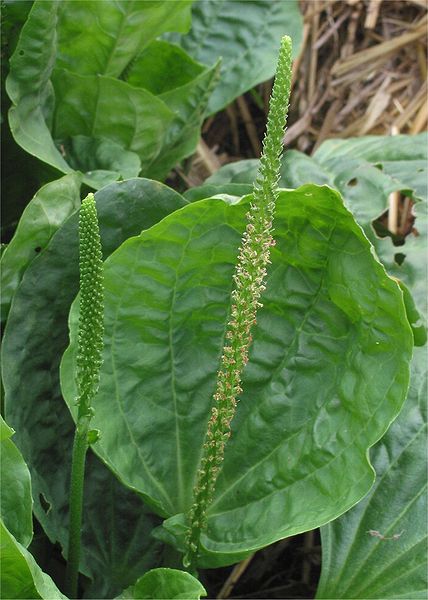Plantain Identification – Plantago major
Heads up
Plantain goes by its scientific name Plantago major. But you might hear some people refer to it as the Broad-leaf Plantain because of its wide leaves. This plant belongs to the Plantaginaceae family, or the Plantain family, which boasts a wide variety of plants under its umbrella.
Plantain: Key Parts in Photos



Where to find it
You’ll find Plantain in both sunny and partly shaded areas. Some of their favorite spots include fields, woodlands, lawns, and disturbed areas. They’re not tall plants, generally standing between 4 to 16 inches.
How to identify Plantain
A unique feature of the Plantain is its flower. It shoots up from the center of the leaf cluster and is a thin spike that can reach up to 10 inches in height. The flowers on this spike are pretty tiny and simple. But when you look closely (perhaps with a magnifying glass), you’ll notice purplish-tipped parts sticking out; these are the stamens, which are parts of the flower that produce pollen. Surrounding these are tiny, papery petals that are light brown in color. Beneath, green structures called sepals protect the flower. And if you see a Plantain, you’ll notice not just one but several of these flowering spikes rising from the plant.
The leaves of the Plantain sprawl out from the base of the plant, forming a basal rosette. Each leaf can be quite big, reaching up to 11 inches, including its stalk. The leaf shape is somewhere between oval and elliptical. These leaves might sometimes have hints of red on their stalks or a few hairs at the base. By the time they’re fully grown, these leaves are smooth and can be wavy around their edges. An intriguing aspect of these leaves is the evident veins on the underside, forming a palm-like pattern.
The Plantain’s fruits are tiny capsules, roughly the size of a grain of rice. These capsules hide light brown seeds within.
